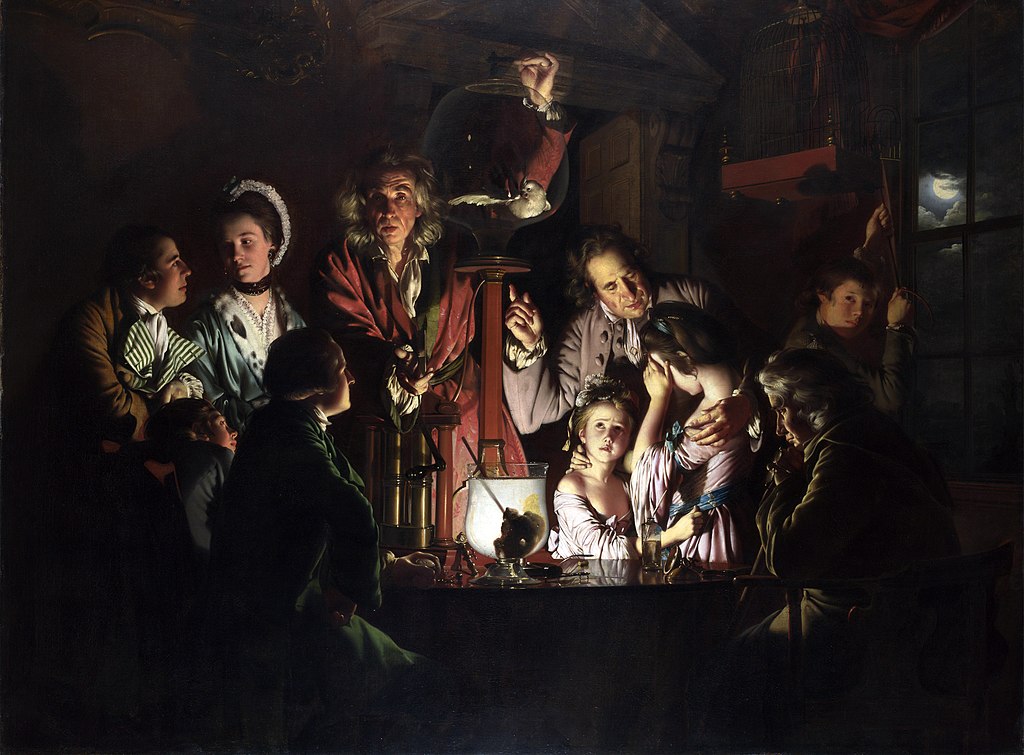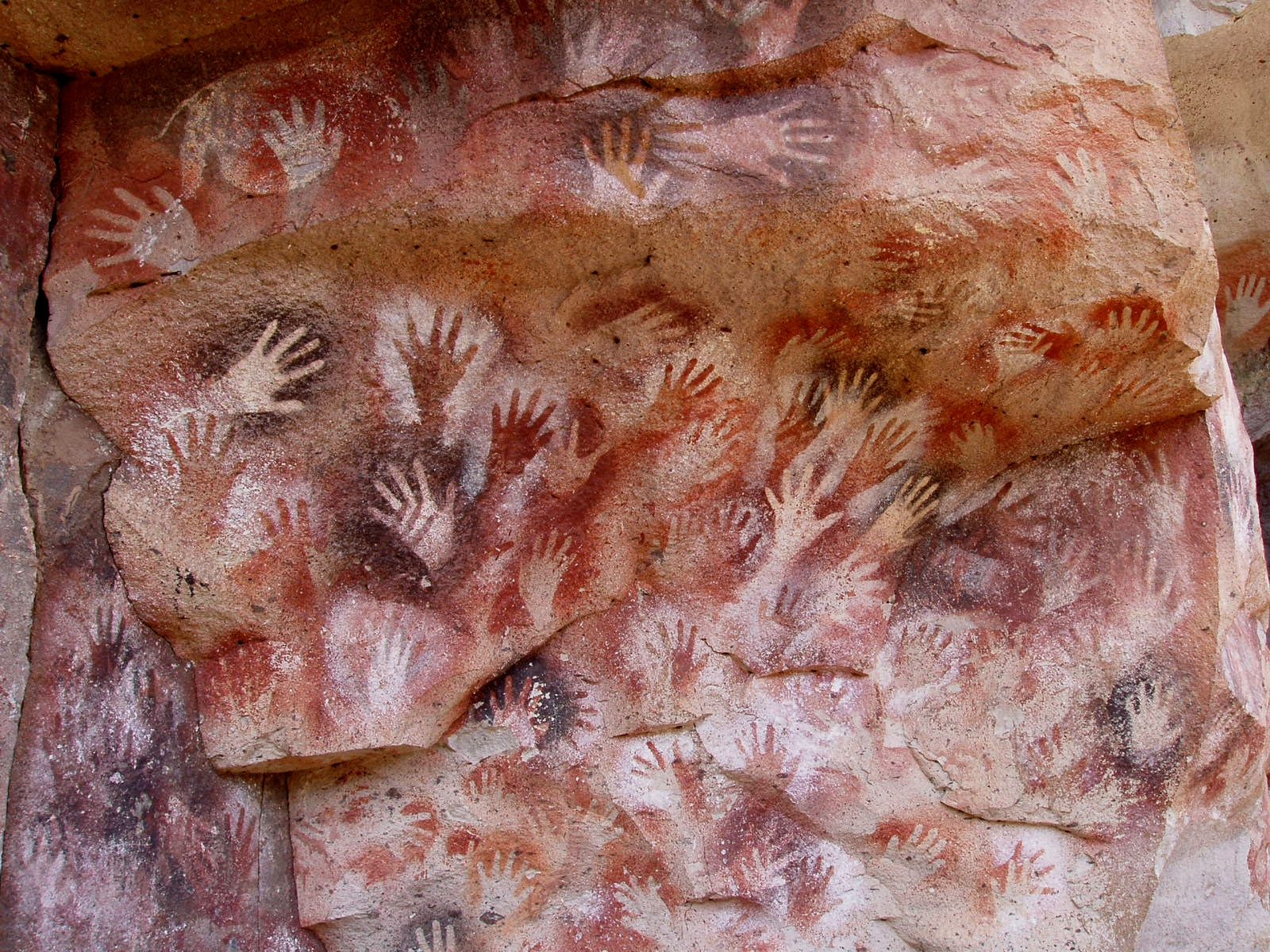Communal creativity
Why do some times and places seem to produce so many good ideas?
Creativity is not something that often occurs alone: the myth of the lone genius is mostly that, a myth. Innovation requires a spark, a variation from the norm. But a spark alone isn’t enough to make a fire: someone needs to see that variation, take it on board, adopt and adapt it.
All groups of people evolve and create. But some times, places, and communities seem to be particularly prone to creativity – to produce a quantity and a quality of creative innovations that seems breathtaking even at the time, but especially in hindsight. Why is that? What is it about the people involved in them, and the dynamics between them, that makes them so prolific?
In the late eighteenth century, the industrial revolution was afoot in Britain. James Hargreaves’s spinning jenny began the process of automation in cotton manufacturing, the first step in the creation of factory-made goods. James Watt developed the first efficient and commercially viable steam engine, laying the foundations for powered factories and ultimately the railways.
The heartland of the first industrial revolution was the British midlands, around the city of Birmingham. The question of why the industrial revolution happened in one place at one time is a big one. Largely flat and home to an abundance of coal and limestone, there was an abundance of natural resources on tap; but the region was also home to all-important cultural capital, human connections that fostered the creativity that was the foundation of the revolution.
Of all those human connections, it’s hard to ignore the outsize role of one particular community: the Lunar Society, a learned society who met at Soho House in Handsworth. The list of its members reads like a who’s-who of eighteenth century intellectual society. The physician and abolitionist Erasmus Darwin – grandfather of Charles – rubbed shoulders with industrialists like Matthew Boulton, partner of James Watt, and James Keir, who pioneered mass production at Boulton and Watt’s Soho Manufactory. The pottery magnate Josiah Wedgwood was a member, as were prominent women intellectuals such as the botanist Susanna Wright and the writer Anna Seward. Science blended with art: the early typographer John Baskerville and the painter Joseph Wright of Derby were members, the latter painting many vivid scenes of scientific experiments and demonstrations.

The Society was part of a wider seam of religious nonconformism that provided an atmosphere of productive iconoclasm outside the established Church of England, a safe environment where conventional wisdom could be questioned. Nonconformists were still banned from attending the universities of Oxford and Cambridge, but that exclusion actually contributed to their productivity. As Jenny Uglow writes in her history of the Society:
“Ironically, the Nonconformists’ exclusion from the old universities, where the classics-based courses had hardly changed since Tudor times, was a great spur to British culture. Many Dissenters went to Europe or to Scotland, returning to work in the Dissenting academies, which positively welcome the new, teaching modern languages, modern history, politics, mathematics and natural philosophy.”
This culture of intellectual dissent encouraged the production of variations, new technologies and new behaviours. That combined beautifully with the society’s culture of openness and collaboration; with that openness came imitation, replication, and borrowing. Jenny Uglow again:
“Copying, in its innumerable forms, displays the very mind-set of this age. Experiments were judged by the principle that they should be repeatable; botanists and zoologists studied replication and variation; teachers saw the urge to ‘imitation’ as the drive to learning; manufacturers valued their machines for their predictable patterns of action, and trained their workers to resemble them.”
This is the “retention” stage of creativity that Donald T. Campbell was to write about nearly 200 years after the foundation of the society, the stage in which new ideas are adopted by others, incorporated into other works, and take on a life of their own. This happens when a perfect cultural balance is struck: when ideas aren’t jealously guarded by their inventors and hidden from others, but are rather shared openly; when the success of individual group members is seen as the success of the group as a whole. Two forces must be in balance here: the desire for invention and glory that pushes individuals to make discoveries, and the desire for collective advancement that pushes them to share those discoveries once they make them. Too often, one force dominates the other. But, in 18th-century Birmingham, they found themselves in perfect harmony – and the world would never be the same.
Draw up a list of the twentieth century’s greatest accomplishments, and MIT will feature at the heart of a great many of them. GPS and radar; the world wide web; spreadsheets; the fax machine; voice recognition technology; video games; nuclear fission; refined oil. All were developed at MIT or by alumni. The institution has been home to 97 Nobel laureates, and commands an $18 billion endowment. It’s a behemoth.
And yet, amidst all the shiny buildings, particle accelerators and world-leading labs, one building was the source of perhaps more innovation than any other: the ramshackle Building 20. Intended upon its construction in 1943 to last “for the duration of the war and six months after”, it inexplicably survived until 1998. In the meantime it produced nine Nobel Prize winners, the MIT Tech Model Railroad Club, and everything in-between.

Its success was perhaps because of its temporary nature, not despite it. Professor Paul Penfield, Jr. describes the “plywood palace”:
“Its ‘temporary nature’ permitted its occupants to abuse it in ways that would not be tolerated in a permanent building. If you wanted to run a wire from one lab to another, you didn’t ask anybody’s permission – you just got out a screwdriver and poked a hole through the wall.”
To read anecdotes from the denizens of Building 20 is to be transported to another world – another time and place, certainly, but another creative plane, too. Gun-toting electrical engineers explode brick igloos on the roof; computer scientists rub shoulders with nuclear physicists and specialists in insect vision. Professor Nelson Kiang describes a place that:
“…really had the right people in the right slot: that’s what made it all go. People were always looking outward, beyond the immediate scope of their research; they were always thinking, ‘where can we take this?’”
Kiang goes on to describe a university administration that had a “benign attitude to research”. Building 20’s ostensible head was Ralph Sayers, an administrative officer within the university. But he didn’t intrude on what went on there; he left the building’s inhabitants largely to themselves. That was partly a quirk of organisational structure: Building 20 wasn’t formally controlled by any one department. “There was utter freedom for everyone in it,” said Professor Jerome Lettvin, “because it wasn’t a department in the ordinary sense.” Freed of the usual committees and bureaucracy that plague university departments, ad hoc productive work within Building 20 flourished.
Freed from power structures that demanded conformism and bureaucracies that slowed down collaboration and innovation, a culture emerged within Building 20 of informal creativity. That culture might well have fizzled out, or had problems of its own; there’s no guarantee that removing the oversight of university administrators will produce positive results. But at MIT in the 1940s, the stars aligned: the people, the physical environment, and the culture created fertile conditions for the countless academic disciplines and discoveries.
Graffiti is as old as humanity, perhaps the first expression of that very concept. Older than writing, the expression of a primal instinct to be seen and to make one’s mark, graffiti probably first occurred in the form of cave paintings. Some depict animals, and might plausibly be considered teaching aids; others, like the stencilled hands of the Cueva de Las Manos in Argentina, are a purer form of art. Countless such works survive to the present day from as long as 44,000 years ago.
Graffiti really came into its own, though, with the invention of written language. The eruption of Vesuvius and burial of Pompeii preserved some wonderful examples of everything from boasts of the writer’s sexual potency, curses against their enemies, and even crude restaurant reviews. In World War II, the text “Kilroy was here” appeared everywhere, a meme of which nobody understands the origin or meaning.

After muddling along in largely similar form for thousands of years, in the 1970s – and in New York in particular – graffiti underwent a renaissance. Behaviours like tagging emerged; subways took art and artists across the city, to be seen by thousands; a distinctive visual style took hold.
Modern graffiti grew out of simple tagging, the sort that has probably existed for millennia. Graffiti writers would tag their names – generally aliases – in public places, the more visible the better. Pioneers like Cornbread and Cool Earl in Philadelphia and TAKI 183 in New York began the practice of “bombing” – of leaving tags on subway trains, as large and as often as possible.
Bombing was competitive: writers competed for attention and for space, trying to get their tags to “run” for as long as possible, and in doings so to be seen by as many people as possible. That competition led to technical innovations. Writers repurposed nozzles from other aerosol products to overcome the limitations of spray-paint cans, allowing for the writing of bigger tags. Simple lines ceased to stand out, so a style of bubble letters evolved that was known as a “throw-up” – a quick but eye-catching style that made tags visible from afar and even on elevated trains.
“I liked the feeling of getting my name up, and I liked the idea of getting away with it. Once I started, I couldn’t stop.” — TAKI 183
An obvious factor in the evolution of graffiti was its illegality. That meant that the very act of writing was a transgressive thrill, but it also meant that the scene was an island unto itself, unmoored from the wider world and from the artistic establishment. Artists might have been competing with each other, but they all existed together, below the radar, with shared enemies and with more in common with each other than with the outside world. Before long, the MTA cracked down on subway graffiti. At one point, they even instituted a “clean trains” policy that forbid any painted carriage from being allowed onto the tracks, which meant no graffiti could ever “run” – significantly reducing the incentive for painting trains. But that just created a more intense selection pressure, doing little to stem the demand from writers to be seen. In response, the writer Nato developed a specialism in hitting rooftops visible from elevated trains, in particular making buildings along the route of the 7 train from Flushing, Queens to Chelsea, Manhattan his personal fief.
Graffiti has existed for as long as human beings have been able to use tools. But it took until the 1970s for it to become a highly developed artform with a visual style and a language of its own, no longer just the expression of passing thoughts and witticisms but rather the foundation of an entire culture.
The musician Brian Eno coined the term “scenius” to describe the potent creativity of loosely coupled groups of people – of what, in music, is typically called a “scene”. Scenius is difficult to pin down, but everyone has experienced its results: we see it in the emergence of new genres of music, new styles of painting, new forms of writing, and anywhere that a group of people, known vaguely to one another, produce creative works of remarkable innovation and quality.
Writing in 2008, Kevin Kelly identified four qualities that nurture the emergence of scenius:
-
“Mutual appreciation” – there’s a sense of peer pressure, in the positive sense of that phrase; individual members of the group are goaded into trying new things, and risk-taking is actively encouraged
-
“Rapid exchange of tools and techniques” – new techniques are shared; ideas flow quickly and are evolved by others
-
“Network effects of success” – the scene views individuals’ success as collective success
-
“Local tolerance for the novelties” — the scene, and the iconoclasts within it, are protected from the suspicions and cynicism of the outside world
All of these scenes exhibit these qualities. Within the group, the dynamic is one of mutual respect and competitiveness; group members are close, but not too close, like the graffiti writers in New York, whose fraternal membership of the same underground subculture was tempered by their intense competition for space and attention. Ideas are shared, and spread through the group quickly; new technologies and techniques are adopted and improved upon, like the manufacturing techniques of the Lunar Society. The scenes themselves exist at a remove from the outside world, free from its attentions and disapproval, like the misfits and square pegs of Building 20 at MIT with their uncertain place in the organisational chart.
Deliberately creating the conditions that guarantee the emergence of this sort of communal genius is probably impossible. It happens so rarely, and is generally the result of a once-in-a-generation combination of time, place, and talent. But it’s certainly possible to create conditions that guarantee that this sort of genius won’t survive. Bureaucracy; rigid processes; hierarchical power structures with one or a few people at the top; elitist gate-keeping that demands degrees and credentials of its participants; veneration of individuals at the expense of the whole. All these behaviours, distressingly common in the “real world”, serve to stifle scenius, cutting off the peer-respect, collaboration, experimentation and knowledge-sharing that is so essential to it.
Further reading
On the industrial revolution, the Midlands Enlightenment, and the Lunar Society:
Jenny Uglow. “The Lunar Men”. Faber & Faber, 2003
Ben Johnson. “The Lunar Society”. Historic UK History Magazine
Brian W. Tross. “Coal-Mining Midlands of England”. Sites of British Modernism, 28 November 2017
“The Lunar Society of Birmingham”, Wikipedia
“The Merton Thesis”, Wikipedia
On MIT’s Building 20:
Paul Penfield, Jr. “MIT’s Building 20: the Magical Incubator”. MIT Department of Electrical Engineering & Computer Science, 1997
Simson Garfinkel. “Building 20: A Survey”
On the New York graffiti scene:
“History Part One”. @149st, 1998
“A History of Graffiti – The ’60s and ’70s”. SprayPlanet
“‘Taki 183’ spawns pen pals”. New York Times, 21 July 1971
“NATO RA interview”, Crook NYC, 2 March 2020
Nina Siegal. “From the Subways to the Streets”. New York Times, 22 August 1999
“Women in Graffiti”. @149st, 2001
Michael Grunwald. “A Spray of History in Cyberspace”
On scenius:
Kevin Kelly. “Scenius, or Communal Genius”. The Technium, 10 June 2008
Brian Eno. “A Year with Swollen Appendices”. Faber and Faber, 1996


Add a comment